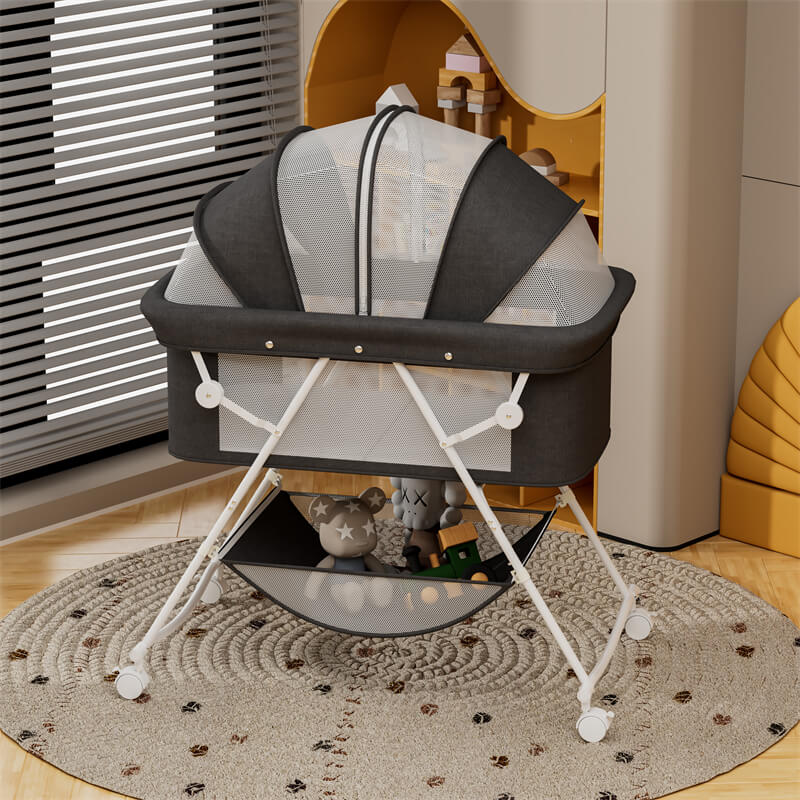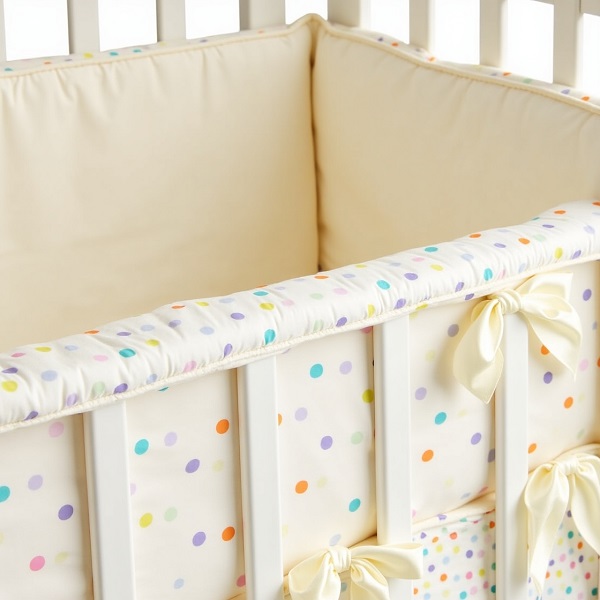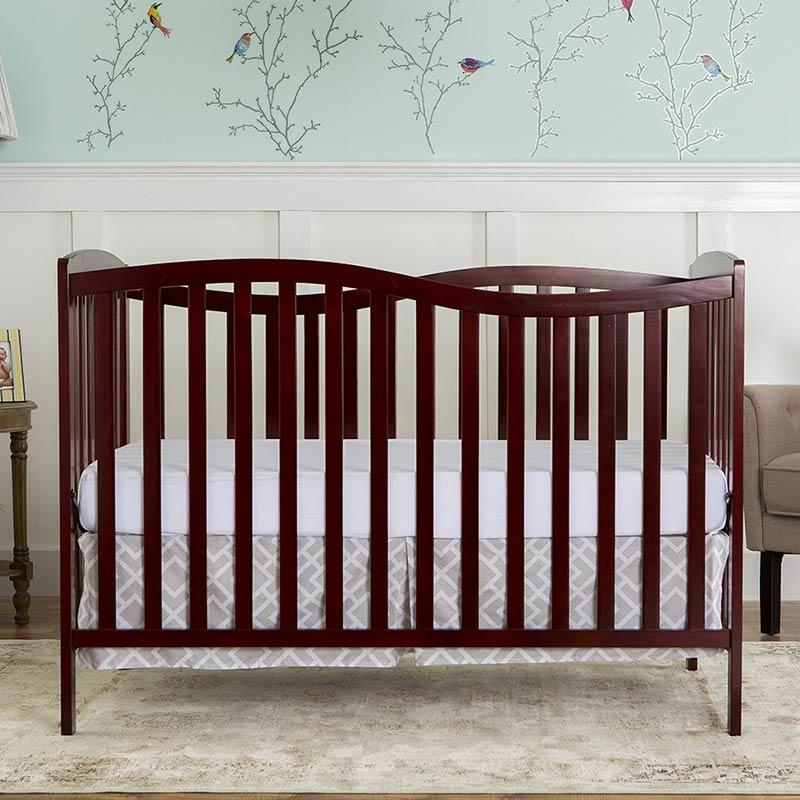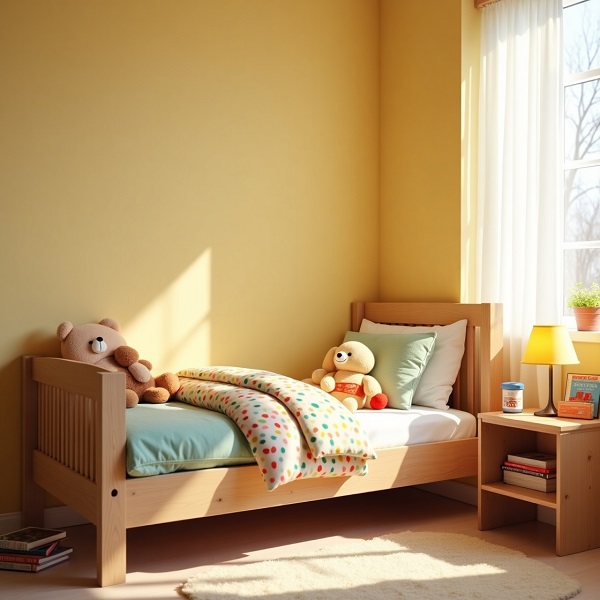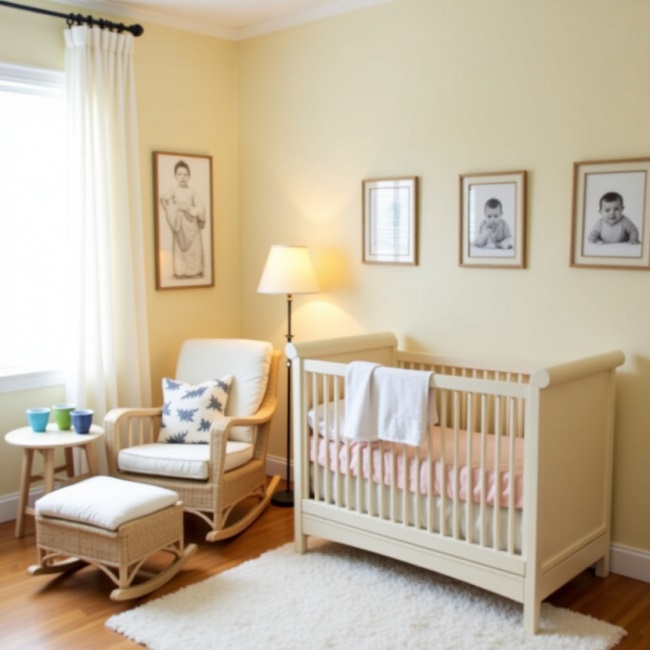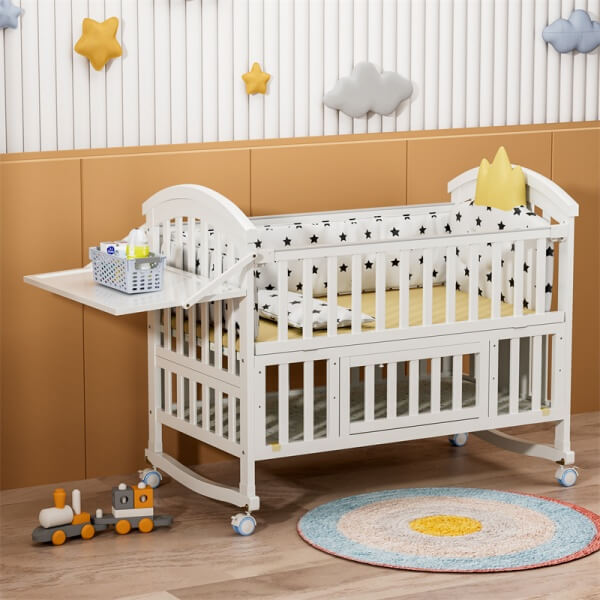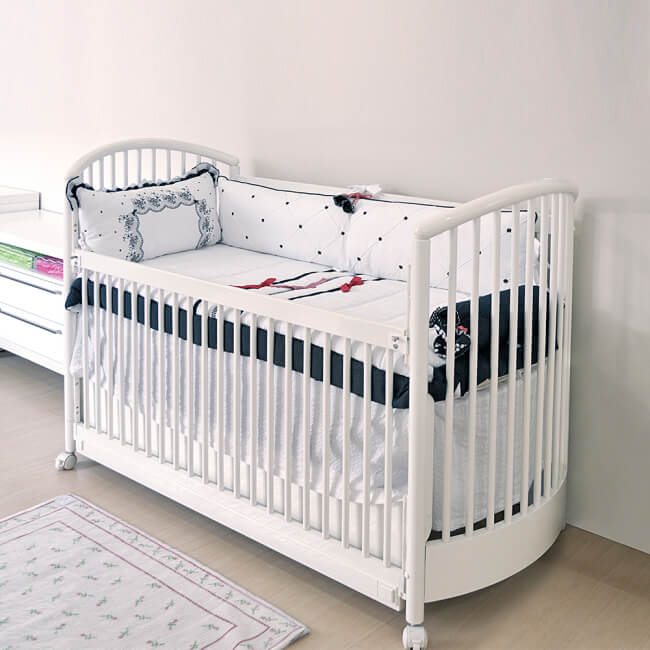Появление новорожденного в семье приносит волнующий и радостный опыт. Как родители, мы, прежде всего, заботимся о том, чтобы наши малыши были в безопасности, комфорте и защищены во время сна. Вот тут-то и пригодится прикроватная люлька. В этом полном руководстве мы рассмотрим все, что вам нужно знать о прикроватные люльки, от характеристик безопасности до того, как выбрать лучшее для вашего ребенка.
Для чего используется прикроватная люлька?
Прикроватная люлька — это компактная переносная кровать, специально разработанная для новорожденных и младенцев, обычно используемая в течение первых нескольких месяцев жизни ребенка. Ее основная функция — позволить ребенку спать прямо рядом с кроватью родителей.
Размещение ребенка в прикроватной люльке обеспечивает легкий доступ во время ночных кормлений, смены подгузников и успокоения. Родители могут быстро удовлетворить потребности своего ребенка, не покидая собственную кровать или не отправляясь в отдельную детскую комнату.
Особенно в первые месяцы, когда сон фрагментирован, наличие ребенка рядом в прикроватной люльке может значительно сократить нарушения сна родителей. Это удобство может стать решающим фактором для уставших родителей, особенно в первые дни, когда они лишены сна.
Безопасны ли прикроватные люльки?
Безопасность всегда является главным беспокойством, когда речь идет о наших малышах, и это справедливо. Люльки для новорожденных, как и другая детская мебель, обычно считаются безопасными для младенцев. Однако для обеспечения максимальной безопасности крайне важно инвестировать в продукцию гарантированного качества и ознакомиться с надлежащими правилами использования. Тщательно выбирая и используя эти кроватки-колыбели, вы можете обеспечить своему ребенку безопасную среду для сна.
Как уложить новорожденного спать в люльку?
Иногда бывает сложно уложить новорожденного спать в качалке. Вот несколько советов, которые помогут облегчить переход и побудят вашего ребенка спать в своей люльке с комфортом:
Создайте успокаивающую обстановку: Убедитесь, что детская кроватка находится в тихом и тускло освещенном месте комнаты. Используйте генератор белого шума или колыбельную, чтобы создать успокаивающую атмосферу, имитирующую звуки утробы матери.
Пеленайте ребенка: Пеленание может помочь младенцам чувствовать себя в безопасности и спокойствии. Используйте легкую пеленку или спальный мешок, чтобы малышу было уютно и комфортно в люльке.
Установите режим отхода ко сну: Разработайте последовательную процедуру отхода ко сну, которая включает такие действия, как теплая ванна, легкий массаж и чтение сказки на ночь. Эта процедура будет сигнализировать вашему ребенку, что пора спать.
Мониторинг времени бодрствования: У новорожденных короткие периоды бодрствования, и переутомление может затруднить им засыпание. Следите за временем бодрствования ребенка и старайтесь укладывать его спать или спать до того, как он слишком устанет.
Попробуйте разные позиции: Некоторые дети могут предпочитать слегка наклонные положения или другие поверхности для сна, например, люльку с жестким матрасом или приставную кроватку, прикрепленную к краю кровати. Поэкспериментируйте с различными положениями, чтобы увидеть, что вашему ребенку будет наиболее комфортно.
Соблюдайте последовательность дневного и ночного сна: Помогите ребенку различать дневной и ночной сон, поддерживая более темную и тихую обстановку ночью и больше общаясь с ним в течение дня.
Где поставить прикроватную люльку в спальне?
Прикроватная колыбель чаще всего размещается прямо рядом с кроватью родителей, как правило, с той стороны, которая ближе к матери, если она кормит грудью, или с той стороны, которая обеспечивает более легкий доступ для обоих родителей. Такое расположение обеспечивает быстрый и легкий доступ к ребенку во время ночных кормлений, смены подгузников или успокоения.
Если размещение детской кроватки-люльки рядом с кроватью невозможно из-за нехватки места или других соображений, то размещение ее у стены около кровати родителей может дать аналогичные преимущества. Такое расположение по-прежнему обеспечивает легкий доступ к ребенку, сводя к минимуму риск споткнуться или споткнуться ночью.
В течение дня попробуйте переместить колыбельку к окну или источнику естественного света, это может обеспечить успокаивающую среду для дневного сна и создать у ребенка чувство связи с внешним миром. Однако важно убедиться, что прямые солнечные лучи не мешают сну ребенка и не вызывают дискомфорта.
Убедитесь, что детская качающаяся люлька находится вдали от любых потенциальных опасностей, таких как шторы, жалюзи или шнуры. Держите ее на безопасном расстоянии от обогревателей, ламп или любых других предметов, которые могут представлять опасность перегрева или падения.
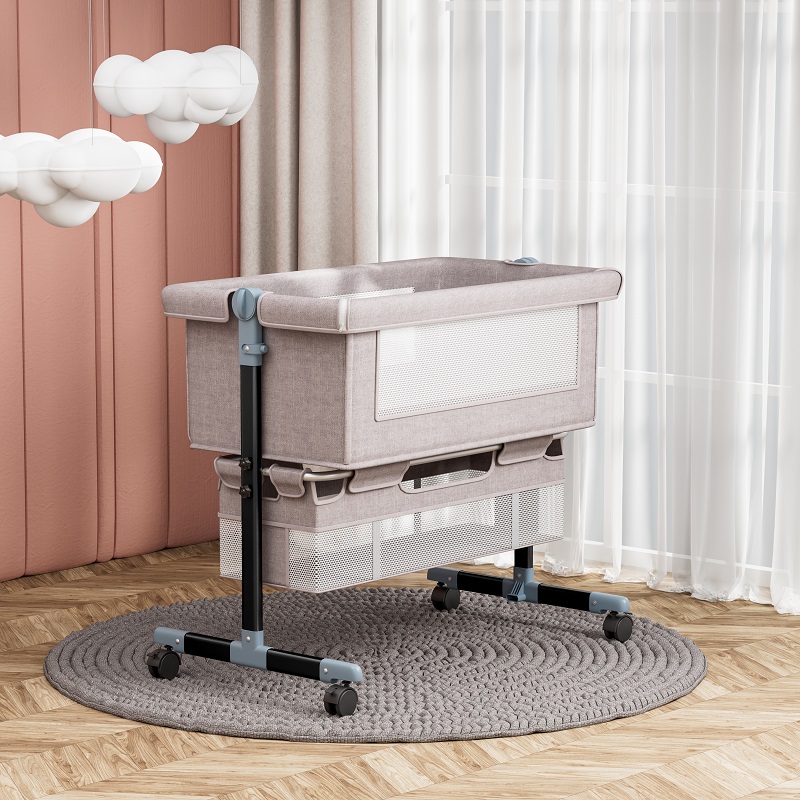
Когда следует вынимать ребенка из люльки?
По мере того, как ваш ребенок растет и развивается, наступит время, когда он перерастет свою кроватку для сна у кровати. Большинство люлек имеют ограничения по весу и размеру, указанные производителем. Как только ваш ребенок превысит эти пределы, пора перевести его в более просторное спальное место. В это время вам может понадобиться детская кроватка или детская кроватка.
Если ваш ребенок начал переворачиваться самостоятельно, это признак того, что ему может потребоваться больше пространства и свободы движения. Детская кроватка или кровать обеспечивает более безопасную среду для сна переворачивающегося ребенка.
Хотя не существует определенного возраста, когда можно пересаживать ребенка из люльки-качалки, большинство детей готовы к переходу в возрасте от 4 до 6 месяцев.
В чем разница между детской кроваткой-манежем и люлькой?
Крепление люльки к родительской кровати:
- Детская кроватка специально разработана для надежного крепления к боковой стороне кровати родителей, позволяя ребенку спать в своем собственном пространстве, оставаясь при этом на расстоянии вытянутой руки от родителя.
- Люлька — это отдельная поверхность для сна, которую можно разместить рядом с кроватью родителей или в другой комнате. Хотя люльки можно разместить близко к кровати для удобства, они обычно не предназначены для непосредственного крепления к кровати родителей.
Дизайн и размер:
- Прикроватные кровати часто имеют одну сторону, которая опускается или складывается, создавая надежный барьер между кроватью родителя и спящим рядом ребенком.
- Люльки бывают разных конструкций, но они, как правило, меньше и компактнее, чем люльки для совместного сна. Обычно они имеют более высокие бортики, чтобы обеспечить ребенку безопасную среду для сна.
Портативность:
- Люльки обычно легкие и портативные, что позволяет легко перемещать их из комнаты в комнату по мере необходимости. Такая портативность может быть удобна для родителей, которые хотят, чтобы их ребенок спал рядом днем или во время путешествий.
- Колыбельки-приставки предназначены для прикрепления к кровати родителей, поэтому их не так легко переносить, как отдельные люльки.
Продолжительность жизни:
- Коляски для совместного сна часто разрабатываются специально для новорожденных и младенцев, когда частые ночные кормления являются обычным явлением. Некоторые колыбели для совместного сна могут иметь ограничения по весу или возрасту, и обычно из них вырастают раньше, чем из люлек.
- Детские кроватки могут быть более универсальными с точки зрения срока службы, поскольку некоторые модели можно использовать в течение более длительного времени или трансформировать в другие полезные предметы, например, в пеленальный столик или место для хранения игрушек.
Руководство по безопасному использованию детской кроватки
Следуйте инструкции по сборке: Еще раз проверьте, что все детали надежно закреплены, а также нет ли ослабленных винтов или деталей, которые могут стать причиной удушья для вашего ребенка.
Содержите люльку в чистоте: Регулярно чистите люльку, включая матрас, мягким мылом и водой. Это поможет поддерживать гигиеническую среду для сна вашего ребенка.
Избегайте переполненности: Не кладите в люльку мягкие игрушки, подушки или слишком много одеял. Эти предметы могут увеличить риск удушья или перегрева.
Надзор: Всегда присматривайте за ребенком, когда он находится в люльке, особенно во время сна. Следите за любыми признаками дискомфорта, беспокойства или затрудненного дыхания.
Проверьте наличие отзывов: Будьте в курсе любых отзывов или уведомлений о безопасности, связанных с вашей люлькой. Зарегистрируйте свою люльку у производителя, чтобы получать уведомления в случае возникновения каких-либо проблем с безопасностью.
Какие функции доступны прикроватной люльке?
Регулируемая высота
Многие прикроватные люльки имеют регулируемую высоту, что позволяет подогнать люльку под высоту вашей кровати.
Сетчатые боковины
Люльки с сетчатыми бортами обеспечивают оптимальный поток воздуха, способствуя вентиляции и снижая риск перегрева вашего ребенка. Сетчатые борта также позволяют вам четко видеть вашего ребенка и обеспечивают ощущение открытости и связи.
Поворотные или раздвижные стены
Некоторые прикроватные люльки оснащены поворотными или выдвижными стенками, которые можно легко передвигать или опускать, чтобы приблизить ребенка к себе. Такая конструкция обеспечивает беспрепятственное взаимодействие с ребенком без необходимости полностью вставать с кровати.
Карманы для хранения вещей
Встроенные карманы или отделения для хранения удобны для хранения предметов первой необходимости, таких как подгузники, салфетки, пустышки или средства по уходу за ребенком, в пределах легкой досягаемости.
Качающееся или скользящее движение
Колыбельки с функцией качания или скольжения могут помочь успокоить вашего ребенка и помочь ему заснуть, имитируя нежное покачивание, которое он испытывал в утробе матери. Эта функция может быть особенно полезна для успокоения капризных или беспокойных детей.
Ночник и звуковая машина
Некоторые прикроватные кроватки оснащены встроенными ночниками и звуковыми устройствами, которые обеспечивают мягкое, успокаивающее освещение и убаюкивающие звуки, помогающие убаюкивать малыша.
Режим вибрации
Некоторые люльки предлагают режим вибрации, который обеспечивает мягкие ритмичные вибрации, помогающие успокоить и расслабить вашего ребенка. Эта функция может быть особенно эффективна для успокоения младенцев, которым трудно успокоиться.
Портативность
Многие прикроватные люльки спроектированы так, чтобы быть легкими и портативными, что позволяет легко перемещать их из комнаты в комнату или брать с собой в путешествие.
Кабриолет Дизайн
Некоторые люльки имеют трансформируемую конструкцию, что позволяет трансформировать их в отдельную кроватку или манеж по мере роста ребенка.
Регулируемый наклон
Люльки с регулируемым наклоном позволяют слегка приподнять голову ребенка, что может быть полезно для младенцев с проблемами рефлюкса или заложенности носа.
Встроенная станция для смены подгузников
Люльки со встроенным столиком для смены подгузников обеспечивают удобное и гигиеничное место для смены подгузников, устраняя необходимость перекладывать ребенка на отдельный пеленальный столик во время ночных процедур.
Функции безопасности
Современные прикроватные люльки в первую очередь ориентированы на безопасность, поскольку имеют прочную конструкцию, запирающие механизмы для фиксации люльки на кровати и соответствуют стандартам и нормам безопасности.
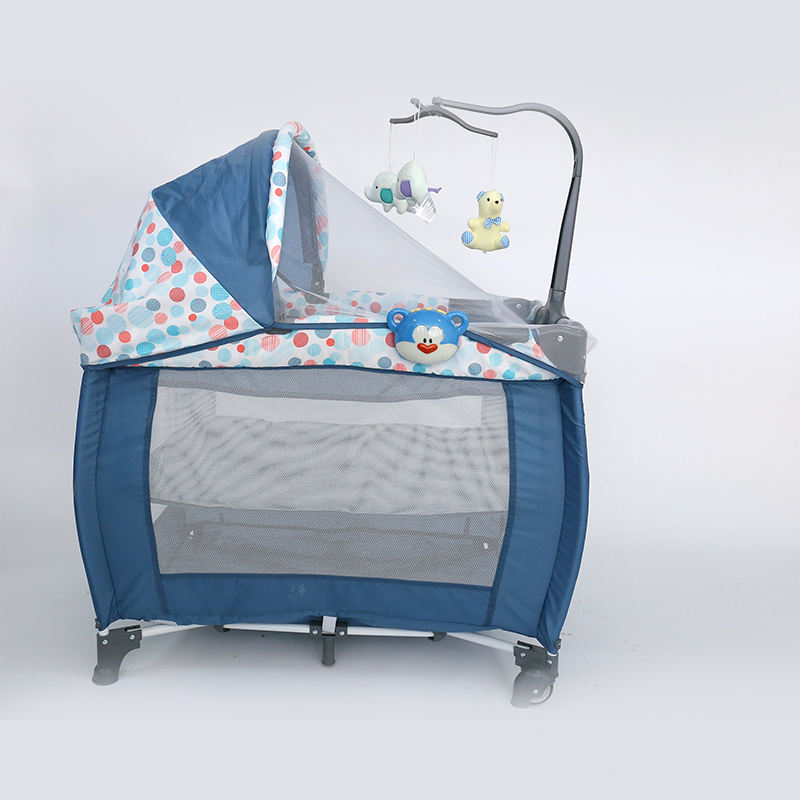
Соображения по выбору прикроватной люльки:
Убедитесь, что детские кроватки соответствуют действующим стандартам безопасности, таким как правила ASTM (Американского общества по испытаниям и материалам) или CPSC (Комиссия по безопасности потребительских товаров).
Выбирайте деревянную колыбель-качалку с регулируемой высотой, которая позволит вам подобрать высоту люльки к высоте вашей кровати.
Если вы планируете часто перемещать люльку между комнатами или путешествовать с ней, подумайте о ее портативности. Ищите легкие люльки с колесами или ручками для переноски для удобства транспортировки.
Установите бюджет на покупку люльки и сравните цены на разные модели, чтобы найти ту, которая предлагает лучшее соотношение цены и качества. Помните, что более дорогие люльки могут иметь больше функций или более качественные материалы, но есть и бюджетные варианты.
Часто задаваемые вопросы о прикроватной люльке
В: Можно ли использовать прикроватную люльку для совместного сна?
A: Прикроватные люльки предназначены для использования в качестве отдельного места для сна вашего ребенка, при этом они должны быть рядом с вами. Они не предназначены для совместного сна, когда ребенок спит в одной кровати с родителями.
В: Можно ли использовать люльку в качестве детской кроватки?
A: Люльки предназначены для первых нескольких месяцев жизни ребенка, когда он меньше и менее подвижен. Как только ваш ребенок перерастает мини-люльку или начинает переворачиваться самостоятельно, пора переводить его в детскую кроватку или большую кровать.
В: Как часто следует чистить люльку?
A: Важно содержать кроватку-люльку в чистоте, чтобы обеспечить гигиеничную среду для сна вашего ребенка. Регулярно чистите кроватку, включая матрас, используя мягкое мыло и воду.
В: Можно ли переносить люльку из комнаты в комнату?
A: Некоторые люльки разработаны как портативные, с колесиками или легкой конструкцией, которая позволяет легко перемещать их между комнатами. Однако всегда проверяйте, что люлька устойчива и надежна, прежде чем помещать в нее ребенка.
В: Можно ли использовать люльку для близнецов?
A: Вы можете приобрести специализированную люльку для близнецов. Двойные люльки предназначены для размещения двух младенцев в одной люльке. Такие люльки обычно имеют две отдельные спальные зоны с разделителем посередине, чтобы обеспечить индивидуальное пространство для каждого близнеца. Двойные люльки удобны для родителей, которые предпочитают, чтобы оба близнеца спали в одной и той же спальной зоне.
В: Могу ли я использовать прикроватную люльку, если в доме есть домашние животные?
A: Если у вас в доме есть домашние животные, важно принять меры предосторожности, чтобы обеспечить безопасность вашего ребенка. Рассмотрите возможность использования люльки с защитным чехлом или сетчатыми бортами, чтобы предотвратить доступ домашних животных к месту сна ребенка. Кроме того, всегда контролируйте взаимодействие домашних животных с ребенком.
В заключение, безопасная люлька может стать ценным дополнением к режиму сна вашего ребенка, обеспечивая удобство, безопасность и комфорт как для ребенка, так и для родителей. Понимая ее предназначение, следуя правилам безопасности и учитывая различные доступные функции, вы можете выбрать лучшую люльку, которая будет соответствовать вашим потребностям и обеспечит спокойный и мирный сон для вашего малыша.
Рекомендуемые статьи по теме:

